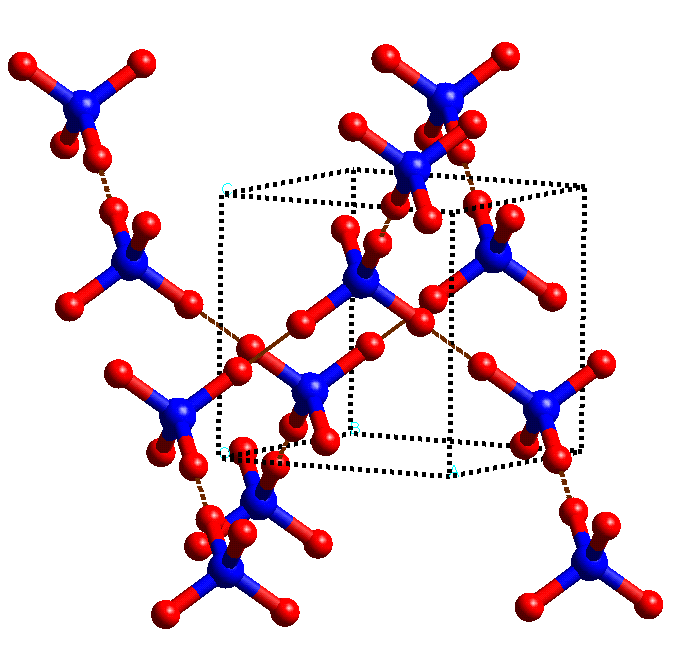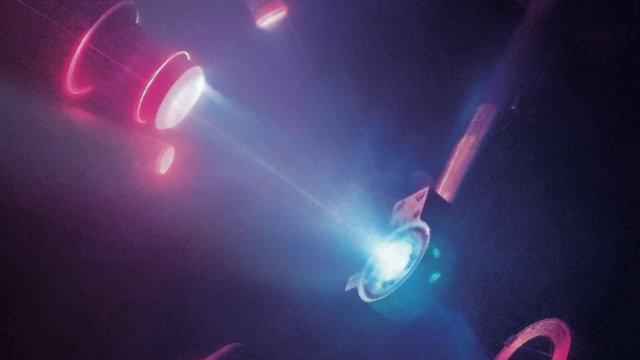Here is an ice cube you do not want to put in your Diet Coke: A solid lattice of oxygen atoms with protons whizzing around inside of it. This ice is not normal on Earth, but might be elsewhere. And scientists have created it in a lab.
A laser pulse on a diamond anvil (Image: M. Millot/E. Kowaluk/J.Wickboldt/LLNL/LLE/NIF)
Researchers at Lawrence Livermore National Lab report that they have observed this new form of ice. The so-called “superionic” ice was first predicted 30 years ago, and is hypothesised to exist inside ice giant planets.
The superionic ice’s observed properties suggest that “superionic ice could be stable under the expected extreme conditions inside Neptune and Uranus,” according to the study published this week in Nature Physics.
Water molecules look like oxygen atoms each connected to two hydrogen atoms in a wide V. When they freeze into ice, they can arrange into a lot of different crystal structures, based on the temperature and pressure during freezing. Regular water ice is called ice Ih, ice one-h, and its molecules line up into hexagons. You’ve probably heard of fictional ice IX, ice nine, from Kurt Vonnegut’s Cat’s Cradle that turns everything it touches into ice nine. Ice IX really exists but is not dangerous.

Scientists in this newly reported experiment began by squeezing water molecules in between diamonds to make ice VII, a crystal form of ice produced under incredibly high pressure shown at the left. Using a laser, they then sent shocks through the ice with pressures millions of times greater than the pressure of air in our atmosphere.
The researchers made measurements of the ice inside the the squeezed diamonds as they increased the speeds of the shocks. At temperatures between 2000 and 5000 Kelvin, or 1727 to 4727C, they watched the ice become more conductive. They felt their results provided evidence for the existence of this superionic ice, in which hydrogen ions move freely in an oxygen crystal lattice.
In simplest terms, scientists have evidence that they have made a special kind of incredibly high-pressure ice in a lab that conducts electricity really well.
The temperature and pressures of this ice imply that it could make up a “large fraction” of Uranus and Neptune’s interiors. The researchers propose that it may even be able to explain some of the behaviour of these planets’ magnetic fields.
One outside researcher, Jonathan Fortney from the University of California, Santa Cruz, told New Scientist that “This is exciting and groundbreaking work”. He noted that besides just water these planets have methane and ammonia at their centres too. He was interested in whether the ice maintained this superionic phase when mixed with other molecules at these pressures. Essentially he wanted to know whether the ice would still exist in environments closer to the ones on Uranus and Neptune.
If you’re a Kurt Vonnegut fan, you don’t have to worry. Ice VII, VIII and even superionic ice have been created in a lab, and we’re all still fine.
